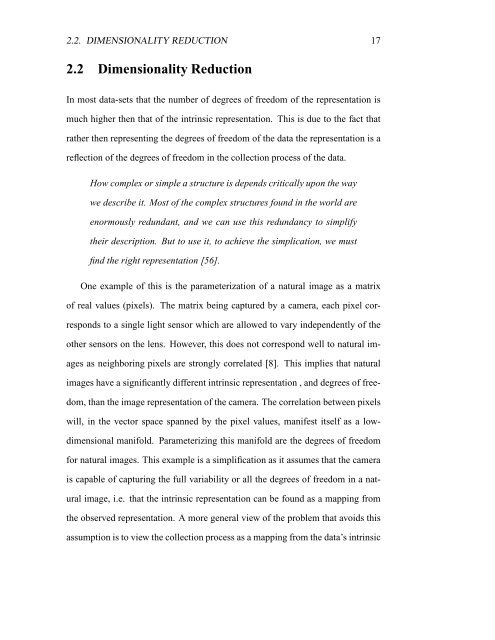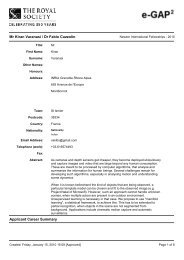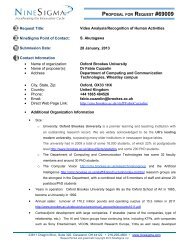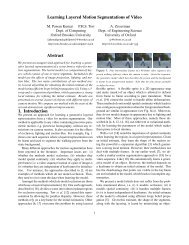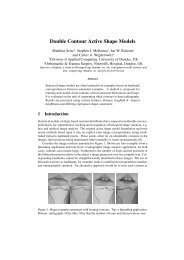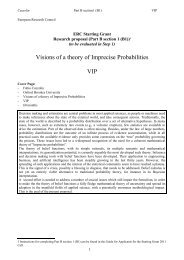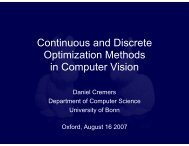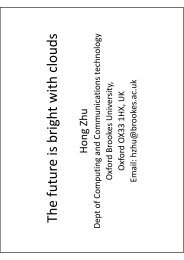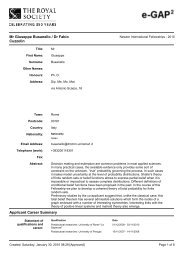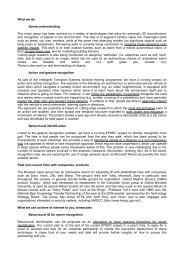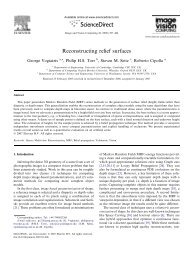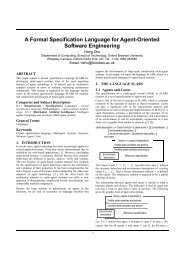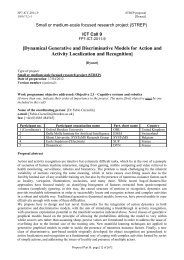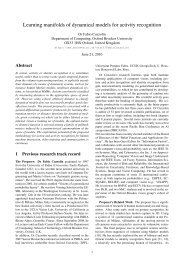Shared Gaussian Process Latent Variables Models - Oxford Brookes ...
Shared Gaussian Process Latent Variables Models - Oxford Brookes ...
Shared Gaussian Process Latent Variables Models - Oxford Brookes ...
Create successful ePaper yourself
Turn your PDF publications into a flip-book with our unique Google optimized e-Paper software.
2.2. DIMENSIONALITY REDUCTION 17<br />
2.2 Dimensionality Reduction<br />
In most data-sets that the number of degrees of freedom of the representation is<br />
much higher then that of the intrinsic representation. This is due to the fact that<br />
rather then representing the degrees of freedom of the data the representation is a<br />
reflection of the degrees of freedom in the collection process of the data.<br />
How complex or simple a structure is depends critically upon the way<br />
we describe it. Most of the complex structures found in the world are<br />
enormously redundant, and we can use this redundancy to simplify<br />
their description. But to use it, to achieve the simplication, we must<br />
find the right representation [56].<br />
One example of this is the parameterization of a natural image as a matrix<br />
of real values (pixels). The matrix being captured by a camera, each pixel cor-<br />
responds to a single light sensor which are allowed to vary independently of the<br />
other sensors on the lens. However, this does not correspond well to natural im-<br />
ages as neighboring pixels are strongly correlated [8]. This implies that natural<br />
images have a significantly different intrinsic representation , and degrees of free-<br />
dom, than the image representation of the camera. The correlation between pixels<br />
will, in the vector space spanned by the pixel values, manifest itself as a low-<br />
dimensional manifold. Parameterizing this manifold are the degrees of freedom<br />
for natural images. This example is a simplification as it assumes that the camera<br />
is capable of capturing the full variability or all the degrees of freedom in a nat-<br />
ural image, i.e. that the intrinsic representation can be found as a mapping from<br />
the observed representation. A more general view of the problem that avoids this<br />
assumption is to view the collection process as a mapping from the data’s intrinsic


